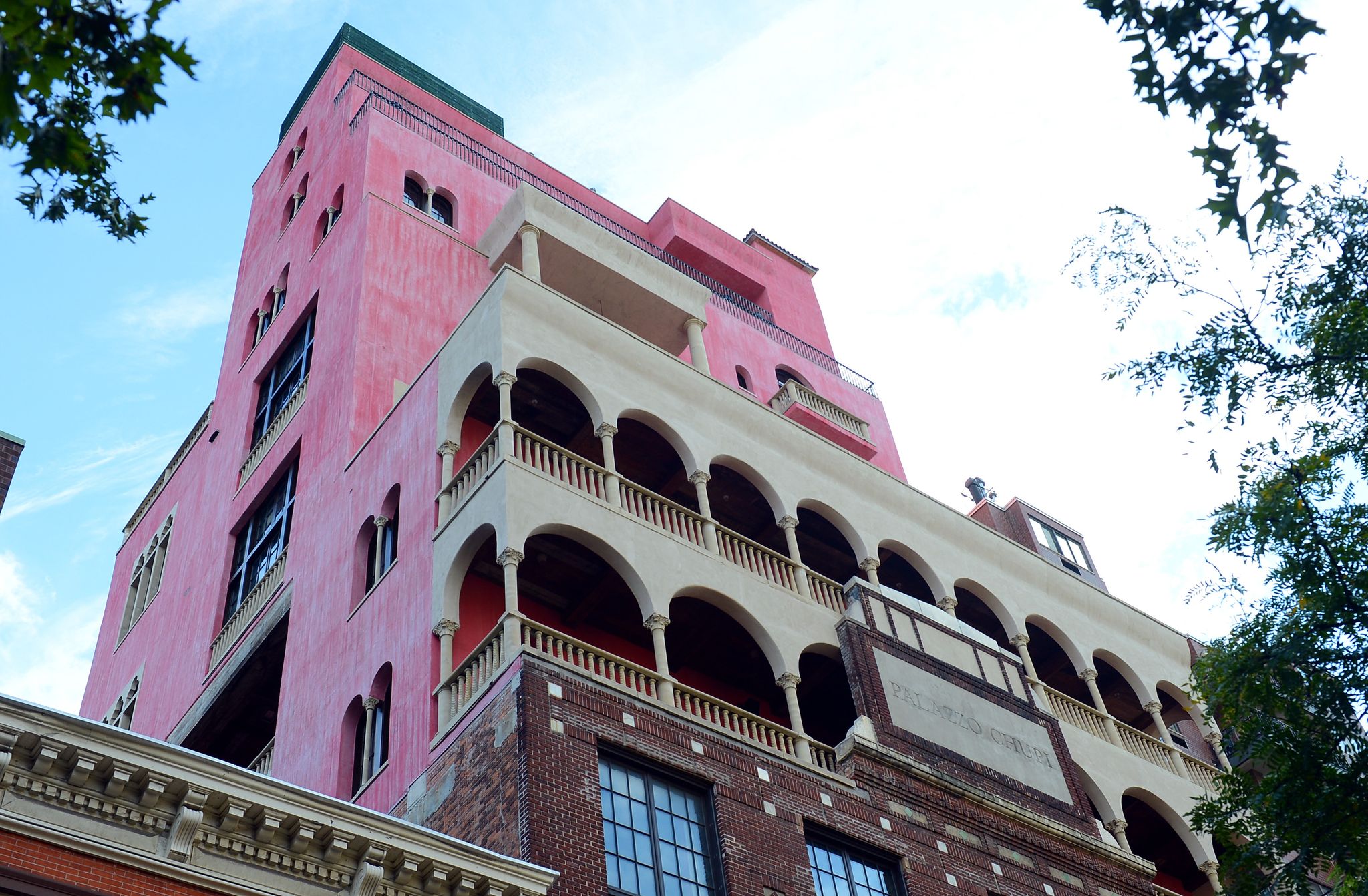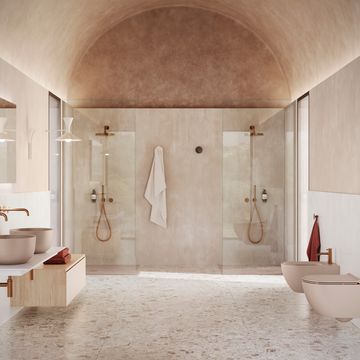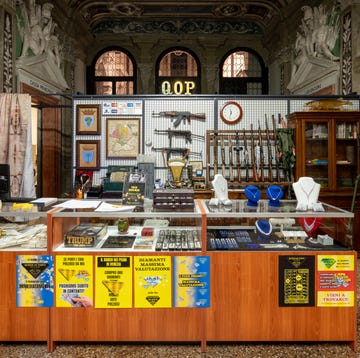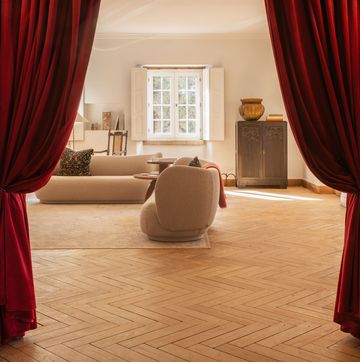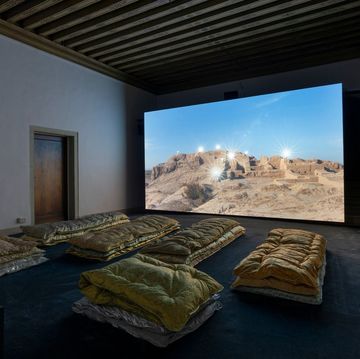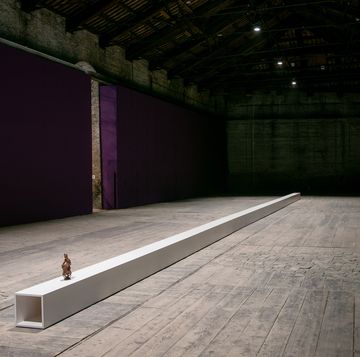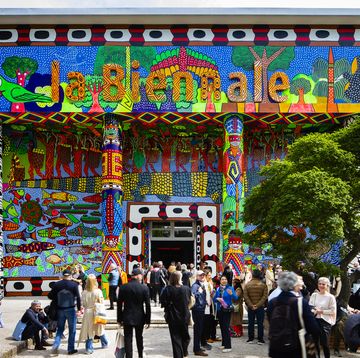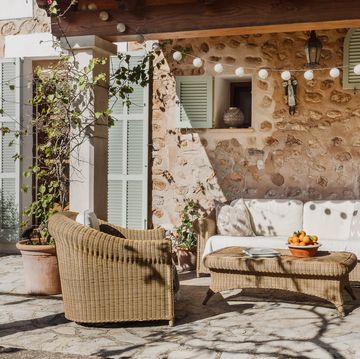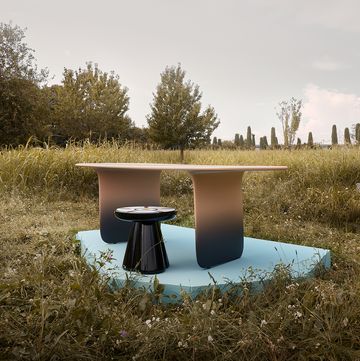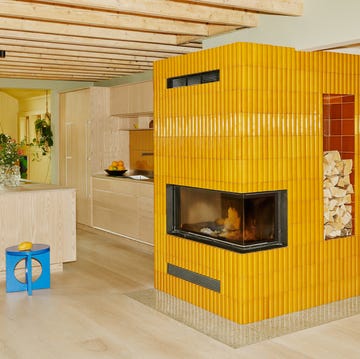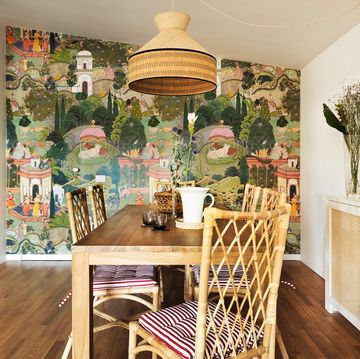Scandal and outrage have led to acceptance and veneration at Palazzo Chupi, a vibrant residence from the dynamic Julian Schnabel, which since 2007, has made its mark on the skyline of New York’s West Village. Painter, film maker (winning best director at Cannes for The Diving Bell and the Butterfly), and designer, Schnabel pieced together this pink palazzo with one eye on aesthetics and another on profits, transforming his atelier into a lucrative real estate operation.
Legend has it that Schnabel first laid eyes on the property in the company of his friend, Roy Lichtenstein. Dating back to 1915, the building was first a barn and then a perfume factory before it was purchased by the artist in 2005. Although busy on set, Schnabel was still able to imbue the property with a bit of his own personality, inspired not only by Venetian palazzi, but also the Scrovegni Chapel in Padova — a treasure trove of frescos by Giotto.
To do so, Schnabel’s larger-than-life spirit was interpreted by Hut Sachs Studio, who was entrusted with giving substance to a sketch the artist reportedly drew in just 15 minutes. Record construction times were owed to the risk of running into bans on height limits, and despite the grievances of millionaire neighbors and associations like the Greenwich Village Society for Historic Preservation, the building is now 12 floors tall — nearly 30 meters higher than before.
An eyesore, an instant icon, an extension of Schnabel’s ego, and “an exploded Malibu Barbie house” are just some of the ways Palazzo Chupi has been described, vaunting one of the biggest terraces in the city. For those wondering, the name comes from the dog of Schnabel’s second wife, hinting at the noted Chupa Chups lollipops, which lend the stucco its bright pink color in a Warholian echo.
The building’s floors were immediately sold out to various stars (and in some cases, resold just as fast). Richard Gere, Madonna, Johnny Depp, and an insider at Credit Suisse all call Palazzo Chupi their New York pied-à-terre, while the artist has held on to the first four floors as a studio and another two as apartments for his twin sons.
From outside, the Italian influence is clearly visible in the arches that could almost face the Canal Grande rather than the Hudson. But inside, a total design is expressed more thoroughly, referencing Giotto often.
“It was the complete experience that I knew must have been there but I hadn’t seen before, where the architecture of the place and what was painted on it were inseparable,” he recalls after a visit to Padua’s Scrovegni Chapel. “What I came to understand there was that I needed my paintings to be walls. I needed to build an architecture to support whatever pictorial language I was going to invent.”
A multifaceted Renaissance man, Schnabel’s home is presented as an eccentric collection of his many personalities. Finishing touches, including flooring from Morocco, California, and North Carolina, were carefully selected by the interior designer, while walls welcome pieces he’s picked up the over decades alongside a photograph by Luigi Ontani over the fireplace.
Every now and again, Schnabel opens the doors to his home, organizing exhibits in a reserved space. The idea is to welcome art in a “familiar” and “normal” environment, avoiding the typical aesthetic of a modern gallery. Still, the residence remains mostly private, holding on to the allure of an outsider who grew up in a small home under struggling economic conditions — an American dream for this self-made man of art.
